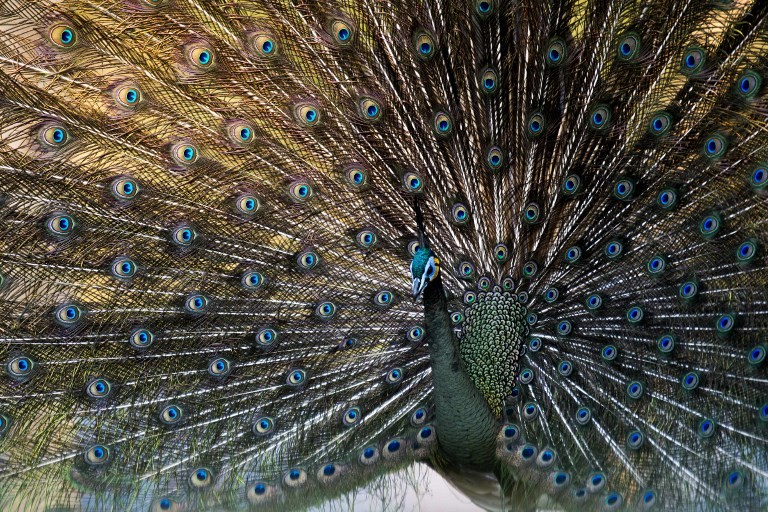Sexual extravagance can be deadly: Study
Change text size
Gift Premium Articles
to Anyone
 In this file photo taken on January 29, 2015 a male peacock displaying his feathers at the Hlawga National Park, in Mingaladon, north of Yangon. The extravagant lengths that males will go to catch the eye of the opposite sex could ultimately cost some species their survival, researchers suggested on April 11, 2018. (AFP/Ye Aung Thu)
In this file photo taken on January 29, 2015 a male peacock displaying his feathers at the Hlawga National Park, in Mingaladon, north of Yangon. The extravagant lengths that males will go to catch the eye of the opposite sex could ultimately cost some species their survival, researchers suggested on April 11, 2018. (AFP/Ye Aung Thu)
T
he extravagant lengths that males will go to to bed a member of the opposite sex can come at the risk of extinction for some species, researchers said Wednesday.
Sexual selection, how animals attract and choose mates, can be thanked for showy traits such as the elegant peacock’s tail, the grand antlers of a stag, and the bushy mane of a lion.
A study published in the science journal Nature, however, found that some creatures take it too far.
US-based scientists analysed the fossils of thousands of ancient crustaceans called ostracods, tiny clam-shaped critters that have been on the planet for nearly 500 millions years.
Males of the group are easily identifiable by a shell that is more elongated than those of females, to accomodate their large sex organs.
Under their shell is a large muscular pump for discharging giant sperm, which on average measure around 20-30 percent of body length, but in some cases longer than the male himself.
The US-based researchers looked at 93 species of extinct ostracods that lived about 85 million to 65 million years ago during the late Cretaceous period.
Read also: How raising an eyebrow aided human evolution
They found that species died out quicker when the male had a much larger shell -- and presumably larger sexual organs that produced more sperm to aid successful reproduction -- compared to females of the same species.
The extinction risk was ten times higher for those with the largest difference in shell size between the genders.
"In the short term the males had an advantage, but it turns out in the long term, not so much," said lead author Gene Hunt, a paleontologist from the Smithsonian National Museum of Natural History in Washington.
It is possible that by devoting too much energy to successful reproduction, the creatures had little left for adapting to changes in the climate or their natural environment.
To date, it has been difficult for scientists to determine how differences between genders influenced species extinction as it is often impossible to tell whether a fossil was of a male or female animal.
But thanks to thousands of ostracod species still alive today, it is well documented how male shells differ from those of the females they seek to woo.
The finding may hold implications for conservationists managing animal species at risk from habitat destruction and climate change, the researchers said.









